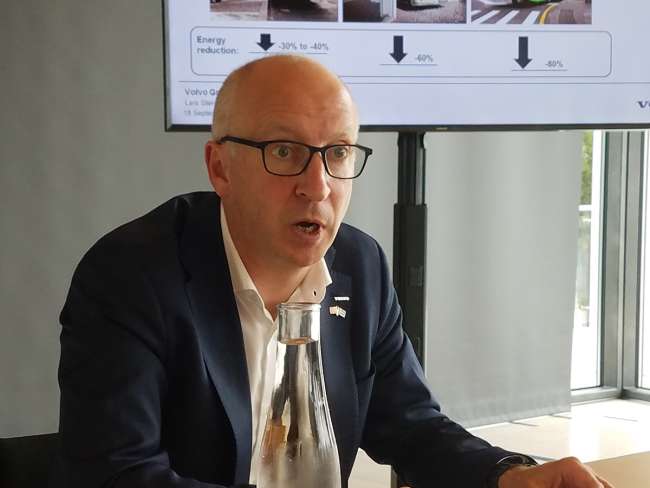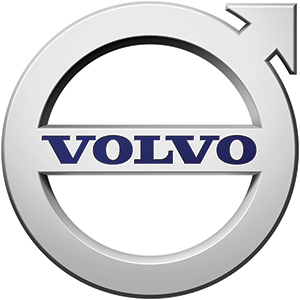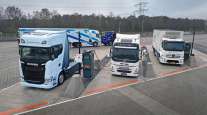Senior Reporter
Volvo’s Top Tech Official Says Engineers Face Uncertain Technology Landscape

WASHINGTON — Truck engineers are in the midst of a technological revolution, but are challenged to move away from established technologies and venture into the unknown, according to Volvo Group Chief Technology Officer Lars Stenqvist.
“I know where we’ve come from, but I don’t exactly know where we’re going,” Stenqvist told a group of truck writers in a wide-ranging discussion of issues at the House of Sweden on Sept. 18. “I have some ideas, but for sure the future is more uncertain than ever, and more is going to happen in the years to come than what has happened if we go back.”

Stenqvist said that two recent Volvo Group launches — the namesake truck maker’s new VNL series in July and the Mack Anthem tractor earlier this month — are evidence that the company is taking the North American market seriously. He added that for Volvo’s 7,000 engineers dedicated to truck development, the times are very exciting, but also more challenging than ever.
“The tough part right now in our industry is that we have problems leaving well-known — some guys would say old — technologies behind,” Stenqvist said.
The company is investing heavily in work on such advanced truck and bus technologies as connectivity, vehicle automation and electromobility, he said, a response to U.S. fleets’ and legislators demand for solutions that will reduce crashes and mitigate congestion.
In addition, engineers need to further develop existing transmission, rolling resistance and aerodynamics technologies. “We still need to continue our investments in those technologies that we have been mastering for decades,” he added.
One area where change will come slow, he said, is trucking’s reliance on the internal combustion engine.
The tough part right now in our industry is that we have problems leaving well-known — some guys would say old — technologies behind.
Lars Stenqvist
“But the death of the combustion engine is not today, not tomorrow, not even 10 years away,” Stenqvist added. “Because the combustion engine, when it comes to longhaul freight, will be some kind of foundation for many years to come.”
Yet, there is still room for improvement for today’s modern engines. Case in point: Volvo’s technology that adds waves to piston crowns to improve the use of oxygen to reduce fuel consumption.
“That makes a perfect design for the mix of fuel and air,” he said. “Just by that shape of the piston we can reduce fuel consumption by 2%.”
Earlier this month, Volvo demonstrated another potential improvement in engine fuel efficiency with a two-day three-truck vehicle platooning event on Interstate 66 in Northern Virginia.
Although Volvo still is crunching the numbers on VNL series platooning test conducted in late August on a closed track in Quebec, Canada, Stenqvist predicted that platooning will save fleets as much as 5% to 6% in fuel savings. Platooning also has the potential to improve safety since it requires the deployment of more collision avoidance technologies than unconnected trucks, he added.
“You’re adding safety features on top of those that we have today,” Stenqvist said. “That’s why we say it’s even more safe than just by operating at cruise control.”
Stenqvist said fully automated heavy-duty commercial vehicles — those without drivers — are “far down the road.”
“That’s definitely not where we are, or even aiming for, because the traffic situation is so extreme and unpredictable, and there are so many, many applications that can be used before then,” he said.
He added, “We will never accept full autonomous vehicles with lower safety demands. For me, it’s very much about education and demonstrating. I think it’s fair today that people are scared about this.”




